A Glimpse of Malta
Click on the video below for a glimpse of what the beautiful Maltese Islands have to offer. The remarkable history and vibrant colours of Malta, the tranquil, laid back atmosphere of Gozo and the crystal clear sea surrounding the tiny island of Comino.
Climate
Malta’s climate is strongly influenced by the sea and is typical of the Mediterranean. The Islands have a very sunny climate with a daily average of five to six hours sunshine in mid-winter to around 12 hours in summer.
Winters are mild, with the occasional short chilly period brought about by the north and north-easterly winds from central Europe.
Summers are hot, dry and very sunny. Day-time temperatures in summer are often mitigated by cooling sea breezes, but in spring and autumn a very hot wind from Africa occasionally brings unseasonally high temperatures and humidity. This is known as the Sirocco, or, in Maltese, the Xlokk – this wind affects Greece and Italy as well; in Malta the air is generally drier because of the short sea track from the African coast.
In addition to the clear beneficial taxation regime in Malta, many of our clients come to buy property in Malta and Gozo to live here permanently because of the overall mild weather conditions. It is rare to experience sustained overcast weather, as in some European and continental countries, particularly in the North. In winter we can have a thunderstorm in the morning, and by early afternoon the sky is clear.
Annual rainfall is low, averaging 568mm a year, and the length of the dry season in summer is longer than in neighbouring Italy. Sea bathing is quite possible well in to the ‘winter’ months, and the peak beach season can last until mid- to late October.
Currency & Banks
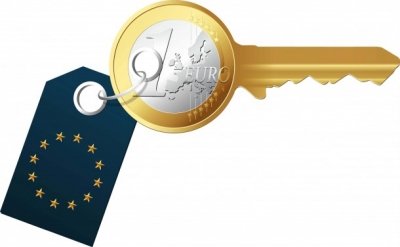 On 1st January 2008 Malta adopted the euro as its currency. On 1st February 2008 the euro became the only legal tender currency in Malta and Gozo.
On 1st January 2008 Malta adopted the euro as its currency. On 1st February 2008 the euro became the only legal tender currency in Malta and Gozo.
For more information on the euro changeover in Malta please go to www.euro.gov.mt
Banks are normally open until early afternoon from Monday to Friday, and until midday on Saturday. Some banks/branches work longer hours. Summer and winter opening hours may differ.
Exchange bureaux at Malta International Airport are open 24 hours a day. International bankcards are accepted and foreign currency is easily exchanged. Banks, Automated Teller Machines (ATMs) and exchange bureaux can be found all over the Islands. The majority of hotels, larger shops and restaurants also accept payment in the main international currencies. Conversion charges may be applied where outlets opt to accept payment in currencies other than the euro.
In line with EU legislation on controls of cash entering or leaving the Community, any person entering or leaving Malta carrying cash or other monetary value of which is equal to or in excess of €10,000 or equivalent is obliged to fill in the appropriate declaration form available from the Customs.
Diversity
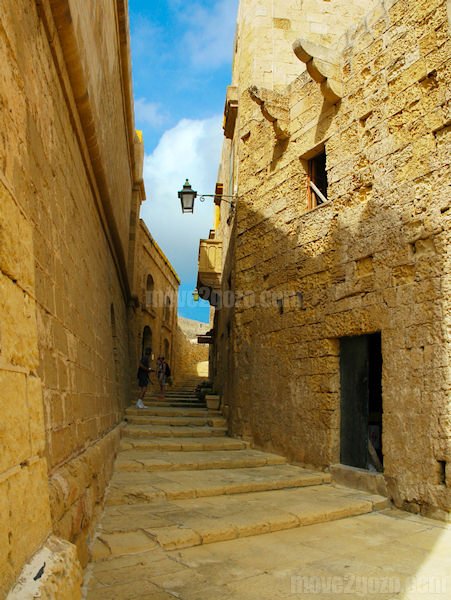 There is scarcely another place of its size that offers so many archaeological sites, cultural monuments, architecture, artifacts and other treasures spanning the entire history of mankind. For those who enjoy the night life, Malta offers many bars, restaurants, cafes, discotheques and Casinos while for the sportive visitor, many activities can be enjoyed throughout the year including tennis, golf, sailing, windsurfing, horse riding and paragliding.
There is scarcely another place of its size that offers so many archaeological sites, cultural monuments, architecture, artifacts and other treasures spanning the entire history of mankind. For those who enjoy the night life, Malta offers many bars, restaurants, cafes, discotheques and Casinos while for the sportive visitor, many activities can be enjoyed throughout the year including tennis, golf, sailing, windsurfing, horse riding and paragliding.
For lovers of music, theatre and the arts, Malta boasts an abundant calendar of cultural events that are staged throughout the year including operas, plays, exhibitions, classical performances and also rock concerts. Gozo on it’s own has TWO Opera houses.
Malta & Gozo also offers culinary experiences to suit every palate. The food in Malta is mainly European and tends to be based primarily upon Italian tastes, though more restaurants are now embracing and offering the authentic local traditional Maltese cusine. Domestic menus are often set by the food currently in season, particularly in summer with its varieties of fish and fruit. However, one finds numerous restaurants in Malta providing a varied menu including oriental and asian cuisine.
Government and Politics
Malta is a republic with a democratic system of unicameral government. The titular Head of State is the President, who is appointed by the House of Representatives. The President’s powers are set out in the Constitution of Malta, which also defines the functions and powers of the Parliament of Malta. Likewise, it sets out the structure and powers of the Courts and lists fundamental human rights and freedoms for individuals.
Legislative power lies in the hands of the House of Representatives whose 65 members are drawn from the two major political parties. Elections are held every five years, with the last election held in March 2008 where the current ruling party, the Nationalist Party headed by Prime Minister Dr Lawrence Gonzi was re-elected. Executive power is exercised by the Prime Minister and the Cabinet. The Prime Minister is usually the party leader commanding the greater support in the House. Every Maltese citizen who is over 18 years of age has the right to vote.
In May 2004, Malta became a full member of the European Union, making buying property and living in Malta more accessible to European citizens.
Health Service & Hospital Treatment
 Malta has an excellent health service. Hospitals are modern and supported by a regional network of health centres. The Maltese Government provides a comprehensive health service to all Maltese residents that is entirely free at the point of delivery. This health service is funded from general taxation. All residents have access to preventive, investigative, curative and rehabilitative services in Government Health Centres and Hospitals. Persons with a low income are ‘means tested’ by the Department of Social Security. If they qualify for assistance, they receive a card which entitles them to free pharmaceuticals. Moreover, a person who suffers from one or more of a specified list of chronic diseases (e.g. rheumatoid arthritis) is also entitled to receive free treatment for his /her ailment, irrespective of financial means.
Malta has an excellent health service. Hospitals are modern and supported by a regional network of health centres. The Maltese Government provides a comprehensive health service to all Maltese residents that is entirely free at the point of delivery. This health service is funded from general taxation. All residents have access to preventive, investigative, curative and rehabilitative services in Government Health Centres and Hospitals. Persons with a low income are ‘means tested’ by the Department of Social Security. If they qualify for assistance, they receive a card which entitles them to free pharmaceuticals. Moreover, a person who suffers from one or more of a specified list of chronic diseases (e.g. rheumatoid arthritis) is also entitled to receive free treatment for his /her ailment, irrespective of financial means.
Private health services exist alongside the Government service. There are several private hospitals on both Islands.
Malta has reciprocal health agreements with Australia and the United Kingdom (note:- this may change for the UK due to Brexit). Nationals of these countries, visiting the Islands for no longer than one month, are entitled to free medical and hospital care in both Malta and Gozo. Medical care in Malta is available through both public and private hospitals and the quality of medical care in Malta is excellent.
Malta is part of the European Union and its medical standards are exceptional – the World Health Organisation ranks Malta FIFTH in the world for its overall health system performance – so international patients can rest assured that they will find first class medical attention and can take advantage of top class surgery in superb facilities, both publicly and privately. In particular, Malta has a high reputation for its expertise in heart and orthopaedic surgery and performs many procedures using Keyhole Surgery (a revolutionary surgery using tiny incisions and instruments which cause less pain and bring a swifter recovery).
Maltese surgeons are highly trained, (five years for the medical degree, then four years of general surgical training) and quite often surgeons train in neighbouring European countries, the UK or the US and have international affiliations. The professional regulatory body in Malta is the Medical Council of Malta which has a comprehensive code of ethics covering both the medical and dental professions.
The Medical Association of Malta (MAM) unites members of the medical profession and the link to Association of Surgeons of Malta help promote high standards of surgical practice in Malta and Gozo.
| Public Hospitals | |
Malta Mater Dei Hospital | Gozo Gozo General Hospital (now part of Steward Healthcare Malta), |
More information can be found at the Government Health Portal. There are a selection of Private hospitals in Malta and well know Private Medical Insurance providers such as BUPA, PPP, and local providers such as Laferla and Axa offer suitable cover.
History & Culture
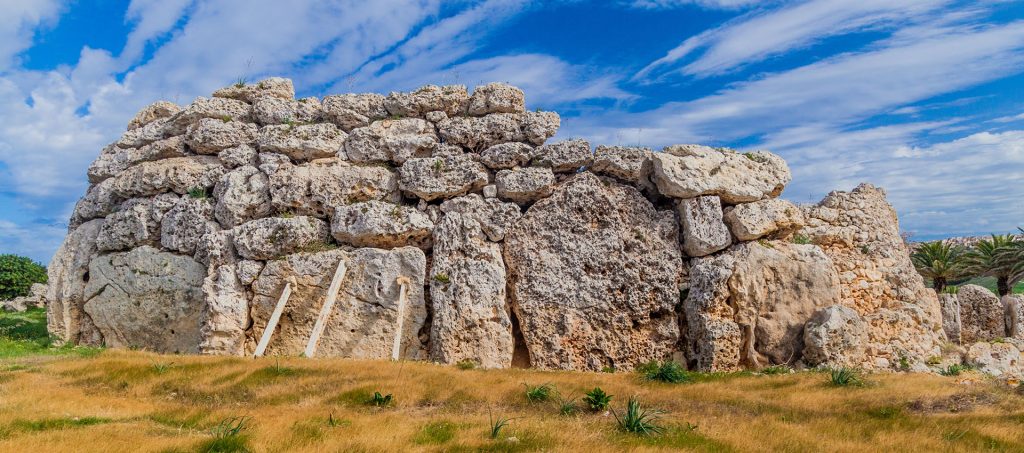
With 7,000 years of history, the Maltese Islands are steeped in culture and heritage. The Islands went through a golden Neolithic period, the remains of which are the mysterious megalithic temples dedicated to the goddess of fertility. Later on, the Phoenicians, the Carthaginians, the Romans and the Byzantines, all left their traces on the Islands.
In 60 A.D. St. Paul was shipwrecked on the island while on his way to Rome and brought Christianity to Malta. The Arabs conquered the islands in 870 A.D. and left an important mark on the language of the Maltese. Until 1530 Malta was an extension of Sicily, the Normans, the Aragonese and other conquerors who ruled over Sicily also governed the Maltese Islands. It was Charles V who bequeathed Malta to the Sovereign Military Order of St. John of Jerusalem who ruled over Malta from 1530 to 1798. The Knights took Malta through a new golden age making it a key player in the cultural arena of 17th and 18th century Europe. The artistic and cultural lives of the islands were injected with the presence of artists such as Caravaggio, Mattia Preti and Favray (amongst many others) who were commissioned by the Knights to embellish churches, palaces and auberges.
In 1798 Bonaparte, on his way to Egypt, took over Malta from the Knights. The French presence on the islands was short lived as the English, who were requested by the Maltese to help them against the French, blockaded the islands in 1800. British rule in Malta lasted until 1964 when Malta became independent. The Maltese adapted the British system of administration, education and legislation. Malta became a Republic in 1974 and a member state of the European Union in May 2004.
This legacy, unique in the Mediterranean, is reflected in the country’s national architecture and collections. Text supplied courtesy of Visit Malta – Malta’s Official Tourism site
Language
The national language of Malta is Maltese, which along with English, is one of the official languages. Maltese is a language of Semitic origin written in the Latin script.
Having been governed by many different countries in the past, the Maltese population carry linguistic imprints from many places, and in particular from English, Italian and French. Almost 100% of Maltese people can speak Maltese, 88% of the Maltese people can speak English, 66% can speak Italian, and nowadays more than 17% of the Maltese speak French.
This shows a recent increase in the fluency of languages, since in 1995, only 98% of the population spoke Maltese, 76% English, 36% Italian, and 10% French. Surprisingly, it also shows an increase in Italian fluency compared to when Italian was an official language of Malta. Before independence in 1964, Malta was a British possession, and a result of this is that English is still an official language, with government business being carried out in both English and Maltese. Most Maltese learn English in school, this being obligatory in most cases. Secondary and tertiary education are given exclusively in English.
French, German and Spanish are the main other languages studied at secondary school.
Major Dive Location
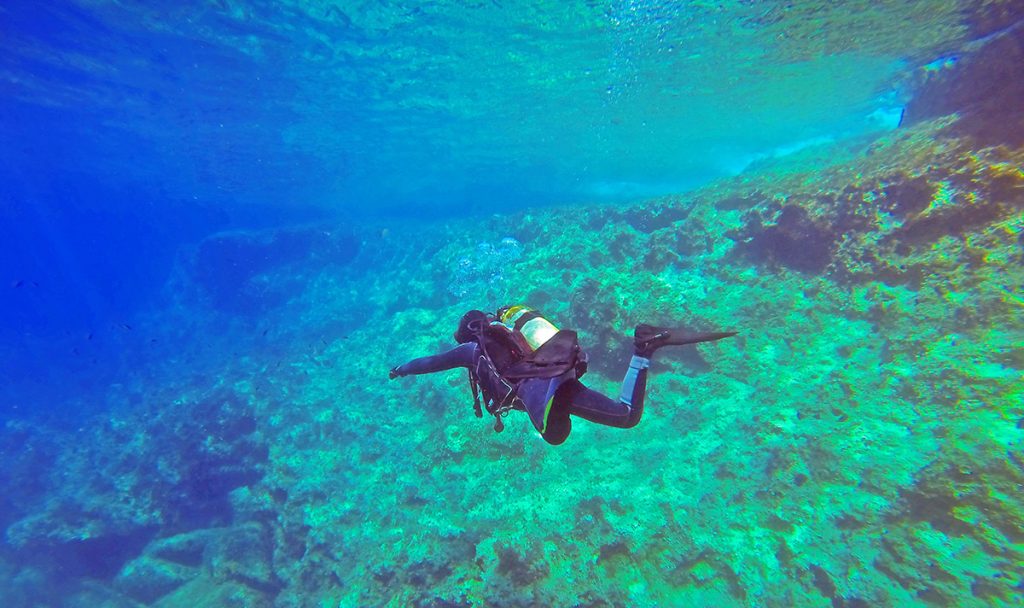 The three Islands that make up the Maltese Archipelago – Malta, the largest; Gozo, the mythical isle of Calypso; and tiny Comino, famous for its Blue Lagoon – form a very special diving site at the heart of the Mediterranean. The Maltese Islands’ clear blue Mediterranean sea is ideal for scuba diving and is highly accessible by relatively every area of the Islands. All three Islands offer excellently unique diving experiences with reefs, caves and wrecks to make the dive one of the most interesting ones in the Mediterranean.
The three Islands that make up the Maltese Archipelago – Malta, the largest; Gozo, the mythical isle of Calypso; and tiny Comino, famous for its Blue Lagoon – form a very special diving site at the heart of the Mediterranean. The Maltese Islands’ clear blue Mediterranean sea is ideal for scuba diving and is highly accessible by relatively every area of the Islands. All three Islands offer excellently unique diving experiences with reefs, caves and wrecks to make the dive one of the most interesting ones in the Mediterranean.
The Islands invite you to discover their natural harbours, bays, sheltered creeks, cliffs, reefs and wrecks. The waters here are some of the most limpid and clear in the world. Visibility is excellent down to around 30 metres. So Malta is a dream destination for underwater photography. Marine life flourishes in a vibrant display of colours. The calmness of the sea makes for excellent visibility and the wildlife danger risk is extremely low, creating an ultimate location for first time divers and beginners. For the more experienced divers, there are various sites that include archaeological artefacts, some from WWII, some even dating back to the Roman era
With dive sites just a stone’s throw away from each other, you will be able to explore a variety of underwater worlds. There are many licensed Dive Centres on both the main islands. Most of the best dive sites are located off Gozo.
Public Holidays
Public holidays observed in Malta are:
| 1st January | New Year’s Day | 7th June | Sette Giugno |
| 10th February | St. Paul’s Shipwreck | 29th June | St Peter and St Paul (L-Imnarja) |
| 19th March | St. Joseph | 15th August | The Assumption (Santa Marija) |
| 31st March | Freedom Day | 8th September | Our Lady of Victories |
| March / April (date changes) | Good Friday | 21st September | Independence Day |
| 1st May | Labour Day | 8th December | Immaculate Conception |
Religion & Worship
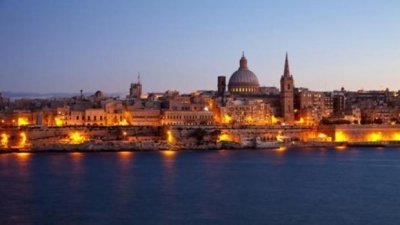
The predominant religion in Malta is Christianity, with Roman Catholicism being the predominant denomination. Most Maltese claim to be Catholic and participate in Catholic religious services and the Constitution of Malta establishes Catholicism as the state religion. Catholicism is also present in various elements of Maltese culture.
Freedom of religion is, however, guaranteed as a constitutional right and generally respected and increasing secularisation and minority religions are in evidence.
There are small Anglican, Church of Scotland, Greek Orthodox, Jewish, Methodists and Muslim communities. Most services are available all day on Sundays, some churches offer services Saturday evenings and a couple offer services during the week first thing in the morning or in the evening.
Other services available on the Maltese islands are:
Anglican, Adventists, Baha’i, Bible Baptist, Buddhist, Greek Catholic, Christina Evangelical Church, Church of Jesus Christ of Latter-Day Saints, Church of Scotland, Evangelical Church of Germany, Greek Orthodox, Jehovah’s witnesses, Jewish and Muslim services.
Swimming & Sunbathing
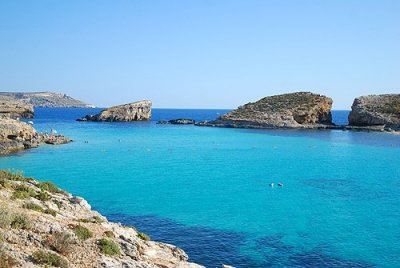
Swimming
The Maltese coastal waters are generally clean and safe for swimming as there are no tides. Some bays are exposed to north and north-easterly winds which do produce some strong undercurrents at times.
Useful Tip: Malta’s beaches and seas are safe, however if you are new to the Maltese Islands, swim where the Maltese do.
Sun Bathing
The Maltese Archipelago lies virtually at the centre of the Mediterranean and has a latitude more southerly than that of northern Tunisia. You are therefore advised to take precautions to ensure you avoid over exposure to the sun. Even in winter it is advisable to wear a suitable factor sunscreen for your skin type. This is important if you are out walking, or taking part in water sports. A sun hat is a must.
Children and especially babies need extra protection from the sun. If you are sunbathing, it is advisable to avoid the strongest sunlight between the hours of 11am and 3pm in peak summer months.
Useful Numbers
|
|
World Heritage Sites
The Maltese Islands have three sites inscribed on the UNESCO World Heritage List. These are the City of Valletta, the Megalithic Temples and the Hal Saflieni Hypogeum.
In all, seven megalithic temples are found on the islands of Malta and Gozo, each the result of an individual development. The two temples of Ggantija on the island of Gozo are notable for their gigantic Bronze Age structures. The Ggantija Temples are the oldest, free-standing monuments in the world and are a testament to the Island’s inhabitation for at least 1,000 years before the famous Egyptian pyramids of Giza were constructed.
On the island of Malta, the temples of Hagar Qim, Mnajdra and Tarxien are unique architectural masterpieces, given the limited resources available to their builders. The Ta’ Hagrat and Skorba complexes show how the tradition of temple-building was handed down in Malta. These temples were inscribed on the World Heritage List as a group and represent a unique architectural tradition that flourished on the Maltese Islands between 3600 and 2500BC. ]
On the Island of Gozo the Azure Window and the Inland Sea are part of a Natura 2000 protected site.
The Hypogeum MaltaThe Hal Saflieni Hypogeum is a rock-cut underground complex that was used both as a sanctuary as well as for burial purposes by the temple builders. It was discovered during construction works in 1902. The three underground levels date from around 3600 to 2400 B.C. The monument is considered one of the essential prehistoric monuments in the world.
The capital of Malta, Valletta, is inextricably linked to the history of the military and charitable Order of St John of Jerusalem. Built after the Great Siege of 1565 and named after Grandmaster Jean Parisot de la Valette, this fortified city has over 300 monuments, all within an area of 55 hectares, making it one of the most concentrated historic areas in the world.
Information courtesy of Visit Malta – Malta Official Tourism site.
